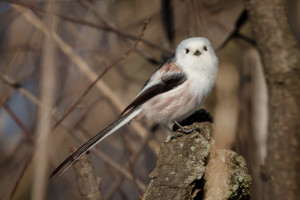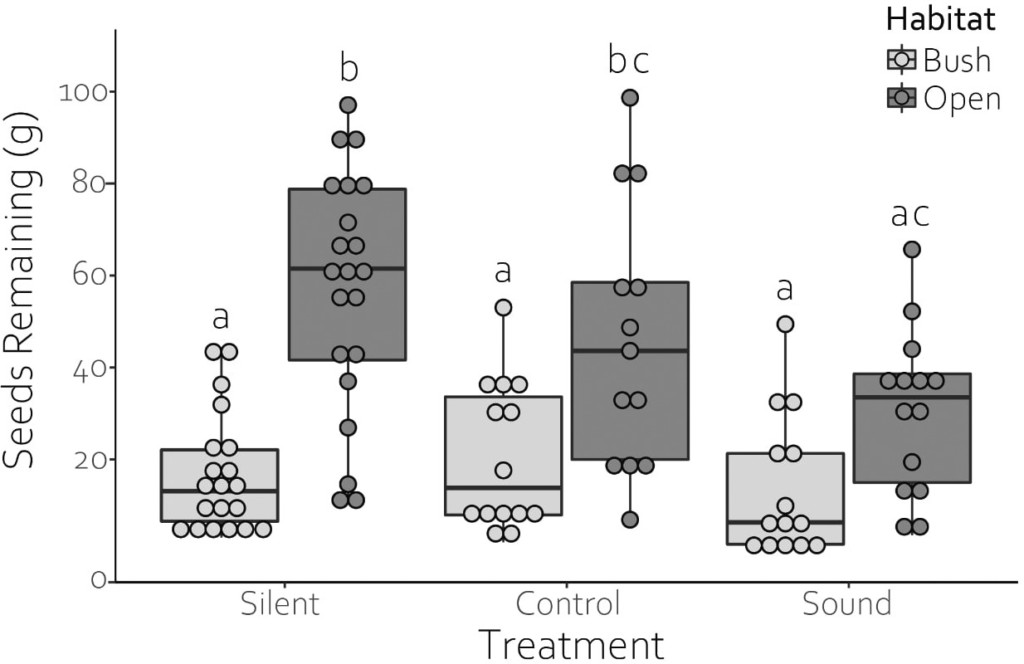 LINKED PAPER
LINKED PAPER
Public information affects foraging patch use by mixed-species flocks of tits in high-risk, open environments. Barnes, M. J., & Beale, C. M. 2021. IBIS. DOI: 10.1111/ibi.12952. VIEW
Imagine going on a city trip (pick your favourite destination, it’s your fantasy holiday). While strolling through the streets in the evening, you suddenly hear two strangers talking about an amazing restaurant nearby. You have not had dinner yet, so you locate the restaurant and give it a try. This scenario nicely illustrates the use of ‘public information’ in decision-making (Danchin et al. 2004, Valone 1989). And birds also do it. They rely on social cues from other birds to pick a suitable foraging spot. This behaviour probably depends on the environmental context. At risky locations – such as an open spot in the forest – birds might pay more attention to social cues to avoid predation (Suhonen 1993). To draw parallels with our city trip example: compare visiting a city with high crime rates to exploring a safer destination. Where would you rely on public information the most?
Bird feeders
Megan Barnes and Colin Beale tested the idea of context-dependent foraging decisions with mixed flocks of Long-tailed Tits (Aegithalos caudatus), Great Tits (Parus major) and Blue Tits (Cyanistes caeruleus). Across the University of York campus, they placed three pairs of bird feeders: one in a forested site and one in a nearby open location. At each feeder, they played one of three sounds: the calls of Long-tailed Tits, the call of a Grey Partridge (Perdix perdix, as a control) and a silent control. To assess the foraging activity at the feeders, the researchers quantified the amount of seeds in the feeders at the end of the day (Browne 1988). Locations with less seeds left are probably perceived as safer foraging spots.

Figure 1. More seeds were eaten at locations in the forest, regardless of the sounds (light grey boxes). At the open locations, however, less seeds were left when the sounds of Long-tailed Tits were played (dark grey boxes), suggesting that these sites were perceived as safer.
Forest versus open locations
The experiments revealed that the birds ate the most seeds at the forested locations. Moreover, the different sounds had no effect at these sites, suggesting that birds already perceived these foraging spots as safe. In contrast, the open locations were visited less often and showed a clear effect of the different sounds. At locations with calls of Long-tailed Tits less seeds were left compared to the two controls. This pattern indicates that birds use public information to guide their foraging decisions. However, this behaviour depends on the context. Information from other birds seems more important in riskier environments. Something to keep in mind during your next city trip.
References
Brown, J.S. (1988). Patch use as an indicator of habitat preference, predation risk, and competition. Behavioral Ecology and Sociobiology 22: 37– 47. VIEW
Danchin, E., Giraldeau, L.-A., Valone, T.J. & Wagner, R.H. (2004). Public information: from nosy neighbors to cultural evolution. Science 305: 487– 491. VIEW
Suhonen, J. (1993). Predation risk influences the use of foraging sites by tits. Ecology 74: 1197– 1203. VIEW
Valone, T. J. (1989). Group foraging, public information, and patch estimation. Oikos 56: 357– 363. VIEW
Image credits
Top right: Long-tailed Tits (Aegithalos caudatus) | Ekytza | CC BY-SA 4.0 Wikimedia Commons
Blog posts express the views of the individual author(s) and not those of the BOU.
If you want to write about your research in #theBOUblog, then please see here





